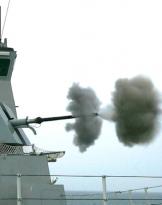In 1918, Rear Admiral William Reginald “Blinker” Hall, head of the British Naval Intelligence Division (NID) responsible for cracking codes, classified enemy communications, was visibly anxious. The intercepted and decreed messages spoke of imperial Germany's military movements, providing an invaluable potential for waging a successful war.
However, the activities of decreeing the codes were complex as they were often changed to make them even more difficult to decipher. The secret network of the admiral's agents collected codes, encryption keys and other intelligence material through radio interceptions, inspections of German ships and espionage operations.
Substantial help came from the use of mechanical decoders which could, in near real time, transmit the movement of German U-boats, troops and consular communications to the British government. It was Hall's decipherers who, in 1917, deciphered the Zimmerman telegram, in which Germany offered an alliance to Mexico if war broke out between the United States and Germany, one of the reasons believed to prompt the United States to enter at war in 1918.

(Extract from the Zimmermann telegram, sent on January 16, 1917, at the height of the First World War, by the Foreign Minister of the German Empire, Arthur Zimmermann, to the German Ambassador to Mexico, Heinrich von Eckardt and decrypted by the English Admiral William Hall. It instructed the German ambassador to approach the Mexican government with a proposal to form an alliance against the United States. Its content prompted the anti-war President Wilson to convene Congress. On April 6, the United States became co-belligerents alongside the Entente in the conflict)
Recruiting informants often took place by exploiting their weaknesses, greed, sex and frustrations making key men easy pawns. One of the most important sources was a secretary who worked in the offices of the German imperial navy, who provided encryption keys directly to the DNI. However, in 1918, the key man disappeared without a trace. The informant's disappearance undermined the effectiveness of British intelligence.

Hall summoned Lieutenant Commander Guybon Damant (pictured 3rd seated from left), a 36-year-old gunner officer from the Isle of Wight, but also a deep-sea diver, to his office.
In 1917, Damant was commissioned by the Admiralty to recover 44 tons of gold bars that had sunk aboard the HMS. Laurentic in the north of Ireland (which he did intermittently from 1917 to 1924). His new mission was to lead a secret unit of five divers able to retrieve the codes of Imperial Germany from the depths of the abyss.
 The danger of the German U-boats
The danger of the German U-boats
In 1917 the Kriegsmarine had begun a naval offensive against the Allies using U-boats to sink Allied ships. The first operations were somewhat successful but, towards the end of 1917, the progress of antisubmarine tactics and the scientific use of defensive and protective minefields began to reverse the trend in favor of the Allies.
Hall realized that the German submarines, leaving their bases in Belgium, would be carrying the encryption keys and valuable intelligence material on board. We had to wait for a propitious opportunity. Thus it was that, in April 1918, Damant and other specialist officers were commissioned by the DNI to secretly dive on the wrecks of German submarines in the English Channel.
On May 20, the UB-33 was located which had sunk after being hit by a naval mine on the Varne Bank, in the English Channel, at a depth of about 23 meters. Damant and his divers went carrying with them the heavy equipment consisting of a heavy suit of sturdy sargia, a decidedly bulky corset and a diver's helmet. To prevent the diver from capsizing, the suit was weighted down with weights and lead-soled boots. In practice, about 90 kilos of diving equipment that allowed them to move with difficulty on the bottom.
Another element of difficulty was the entry into the wreck. Once they reached the vertical of the boat, they would have to enter the hull through the narrow hatch of the command tower, which could have been deformed by previous explosions, or break through with explosive charges. Which is not recommended due to the risk of new explosions.
Another problem was the presence of mines in the area, the explosion of which, even at a distance, could have broken the eardrums of the divers, damaged their internal organs or killed them instantly. Armed mines could also be contained inside the U-boat which increased the level of danger for the diver. In addition, the use of explosives to breach the hull was considered dangerous as it would produce sharp, twisted metal sheets that could have cut through the air supply hoses.
To encourage divers, the Admiralty promised an indemnity of £ 300 to £ 500 to next of kin in the event of an accident.
Penetrating the wrecks, the divers would have had to move in an environment with zero visibility that made the movements complex: let's imagine narrow tunnels of twisted and sharp irons that could have cut the air hoses. Nonetheless, Damant's missions had some success and the first documents began to arrive at the DNI.

One of the luckiest operations took place on October 4th. Damant and the Special Section aboard the tender Corycia discovered the wreck of the UC70 off Whitby. Operating as they had on other boats, with one diver inside and one near the hatch, they slowly searched the wreck for information. Unable to use explosives, they were able to inspect a U-boat in good condition.
They discovered that some of the crew had committed suicide inside the boat after the sinking.
The search was ultimately fruitful and they found cipher codes of great value.
Until the end of the war on November 11, 1918, divers methodically recovered materials from at least 15 different wrecks, providing valuable information that allowed the DNI to decipher German communications faster, and allowing the Allies to deploy troops, ships and materials in coordinated way.
The miracle was that none of them were seriously injured or killed. Their work remained classified for many years until 1969-70 with the release of much of what is now known as ADM 116 and ADM 137, preserved in the National Archives, in which the work of Damant and other courageous divers emerged, the "Tin-Openers".
The section was dissolved in 1919, although one of their motherships, the Racer, remained in service and operated on the wreck of the HMS Laurentic. But this is another story of the sea ...
Photo: web / "Tin Openers" Myth and Reality: Intelligence from U-boat Wrecks during WW1 by Innes McCartney
(article originally published on https://www.ocean4future.org)












